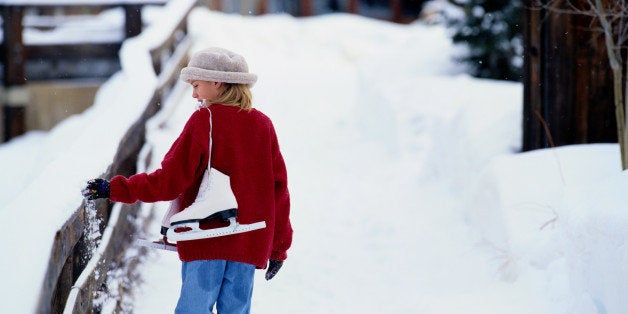
There has been a lot of press recently about parents becoming involved with child protective services due to their children being unsupervised while they walked around by themselves. Parents often ask me about the age at which a child is ready to walk to school -- or anywhere in the neighborhood -- alone. I advise that it's a process of learning about street safety and the challenges that walking alone can bring. It starts by holding an adult's hand while walking, then walking alongside the adult to eventually allowing the child to cross streets and intersections on their own.
Little ones aged 4 to 6 always need adult supervision. They are ready to practice the basics of crossing a street, but may still do the unexpected and are easily distracted. Adults need to model safe walking behavior. When your child reaches the 7 to 9 age bracket, they still need supervision, but are ready to learn more complicated skills such as locating and acknowledging traffic, acknowledging the speed at which cars are moving and ignoring distractions such as animals or friends calling their name. By the time children are age 10 and above, they may be ready to practice walking alone. Each child is different. Some may not be ready until they are 11 or 12, or even older, if they have developmental challenges. Parents must err on the side of safety, even if the child protests.
And, even if your child is ready at age 10 or 11, The NYSPCC does not recommend that they be "put in charge" of younger siblings walking with them. It's simply too much responsibility for a child. Parents need to err on the side of caution. If something unexpected occurs, or there is an emergency, it's asking a lot of a 10-year-old child to figure out next steps, let alone protect a younger sibling.
For the route to school, I suggest that parents prepare children by mapping out a very simple, low traffic route and rehearse it with the child. Pick routes that have sidewalks if possible. If there are no sidewalks, then the National Center for Safe Routes to School suggests that the child should walk facing oncoming traffic as far to the right as possible. When your child consistently displays safe pedestrian skills, you may give them more independence. Revisit safety issues with your child on a regular basis. The website saferoutesinfo.org has a helpful guide for parents to assess when their child is ready to walk alone.
Your child will learn from your example. So, even if you're tempted to run across the street as the light is flashing "don't walk," please do not do it. Be a walking role model. Obey all traffic signs and signals. Stop at the curb. Look both ways. And please, don't listen to your iPod or talk on your cell phone while crossing the street, as it will confuse your child when you don't allow them to do it. Take the time to stop at the intersections, look both ways and wait until the path is clear. Keep looking for traffic until you have finished crossing. Walk, don't run, across the street.
I'd also make sure that your child has memorized your home address and phone number. Role play with your child what they would do if they got lost. Make sure they know how to get help safely.
Which brings me to my last point, although it is a rare occurrence, there can be strangers intent on harming your child. Stranger danger is real, though children are most often assaulted, either physically or sexually, by someone that they know and trust. Play it safe. Rehearse these scenarios with your child, too. Talk to them about making noise, screaming and running away. If someone tries to force them to go somewhere -- and in most abduction cases, it's a man -- tell them to scream "This is not my father!" Onlookers who see a child yelling usually assume it's a parent and this will give them reason to intervene. A website familyeducation.com lists points that parents should cover with their child regarding stranger safety.
For more information on keeping your child safe visit NYSPCC.org.